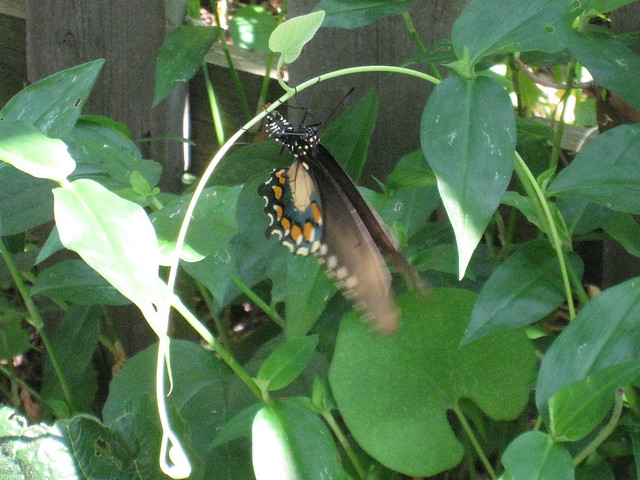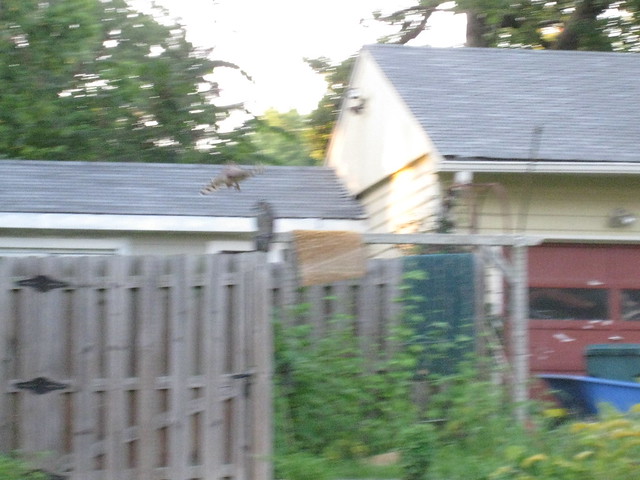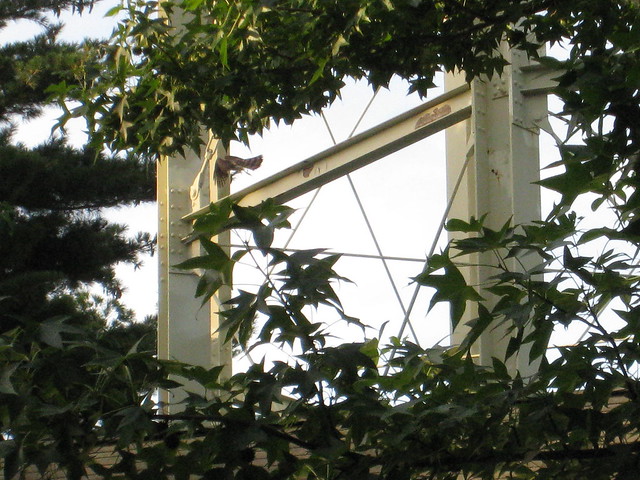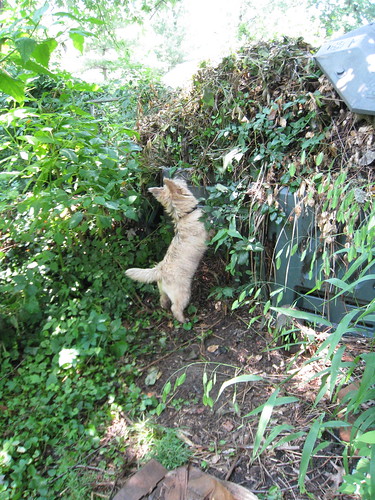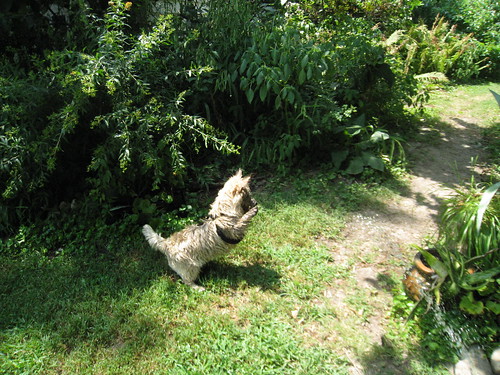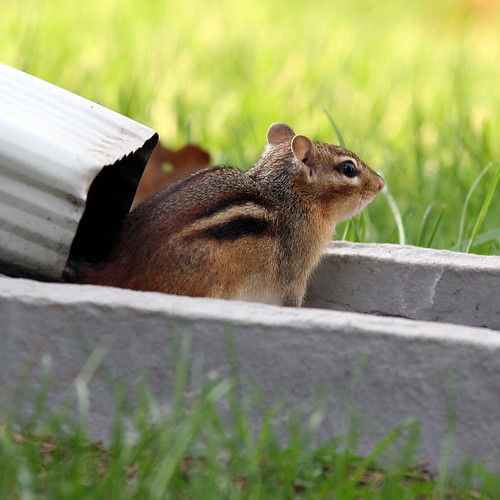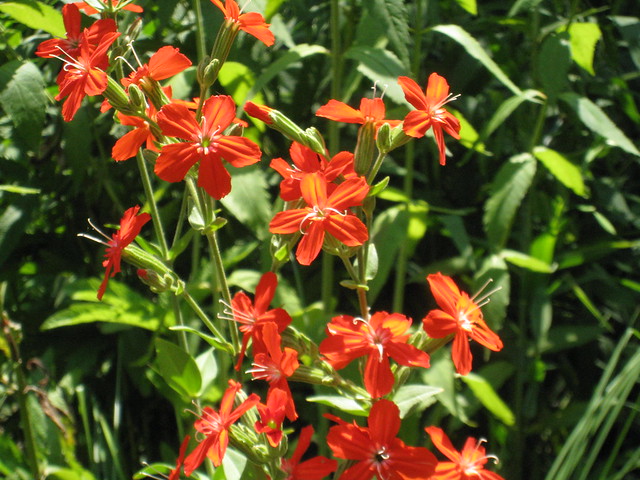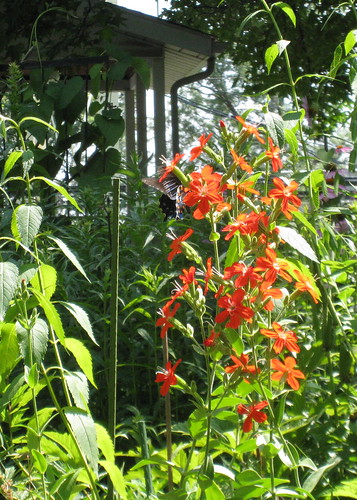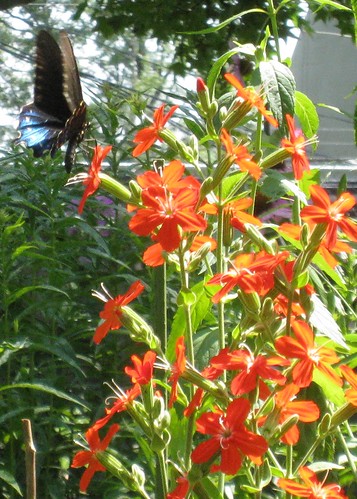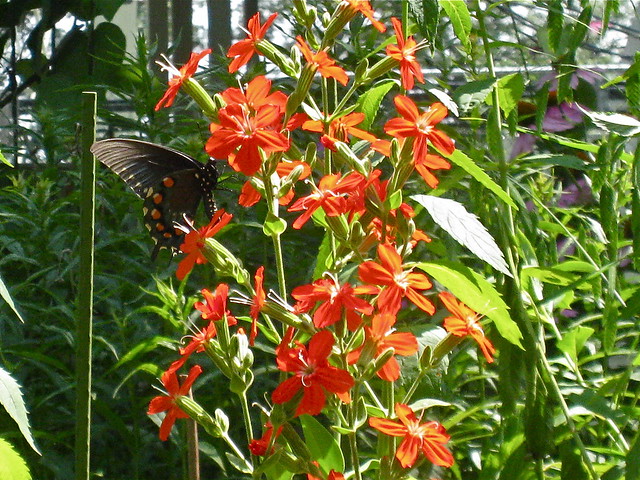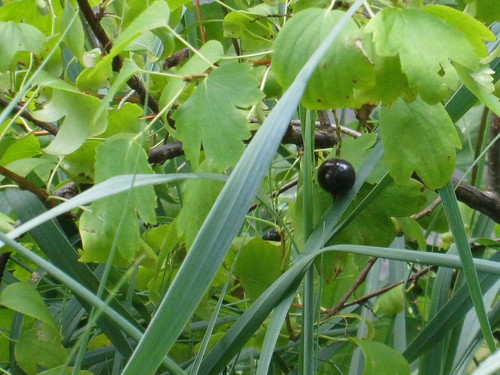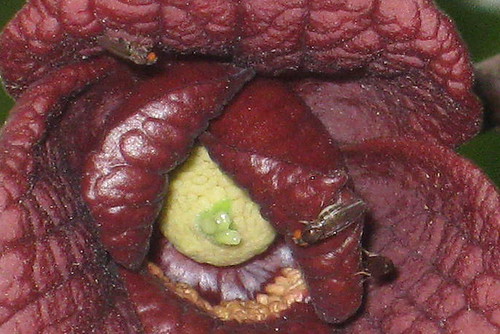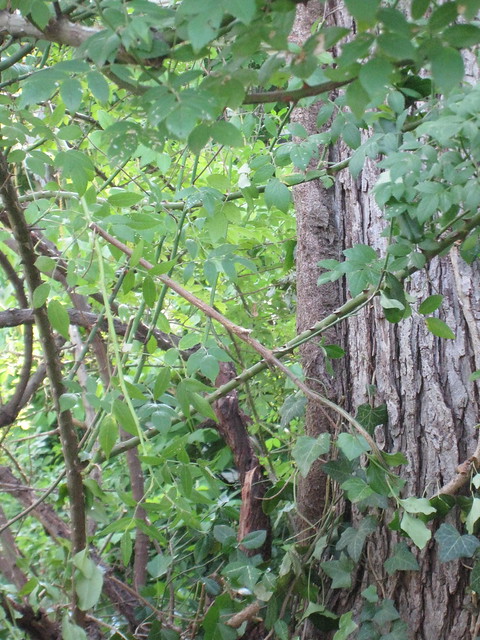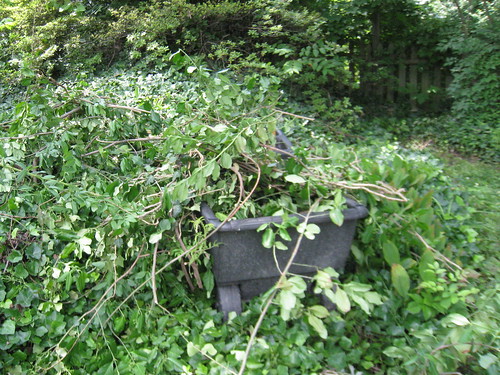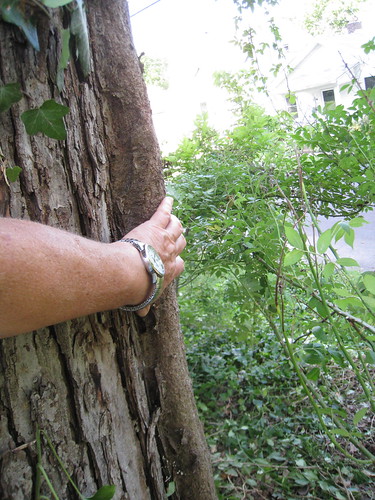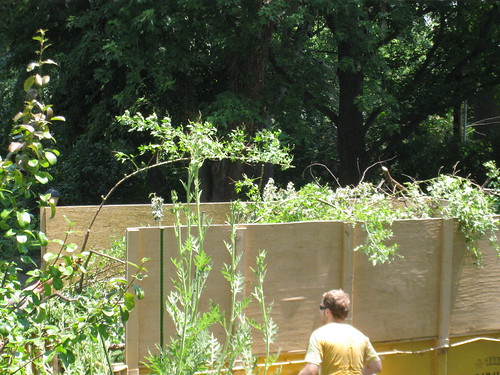I snapped this pic while talking with my neighbor because the butterfly was close and appeared to be different. When I uploaded it to my computer, I found that this female Pipevine Swallowtail (Battus philenor) was laying eggs, and was indeed different. Seen from below, as in the photo, she has a tan area of her hindwing which would normally be black. The forewing appears to have a tan area too, but it's blurred by her movement.
I've now spent the better part of the day searching for other photos of aberrantly colored butterflies, without much success. I've also searched the internet from information on this phenomenon. As nearly as I can decipher from a number of websites, the condition is called hypomelanism, a partial lack of the dark pigment, melanin, which should be present.
I posted it on BugGuide to get some feedback on the unusual coloration. BugGuide is a fascinating website that provides a catalog of insect photos & forum for topics, including identification. Submit a photo of the insect you'd like more information about, as I did on my BugGuide page. Other registered users can submit their comment or identification below your photo. Registration is free (donations accepted). Submit photos of the insect only. Forget about artistic composition, just crop away.
BugGuide member Kelly Fiegle had better luck than I did in finding other examples of Pipevine Swallowtails with similar tan on the wings or at least, less black. Kelly found three photos which I will link to, since all are copyright restricted. The first is a beautiful shot of a female Pipevine Swallowtail from Florida with slightly reduced color in the same area of the hindwing as my female. The second photo, from Texas, is a worn individual, but is her age enough to explain the reduced color of the hindwing cell as well as the lack of orange in the hindwing spots? The third photo of another worn individual, has a similar area of reduced color.
Genetic color variation? Fading caused by to unknown conditions? I have no idea. But I'm proud to say that of the 5 billion images on the photo sharing site Flickr, mine is the only insect photo tagged with "amelanism."
You might also like:




